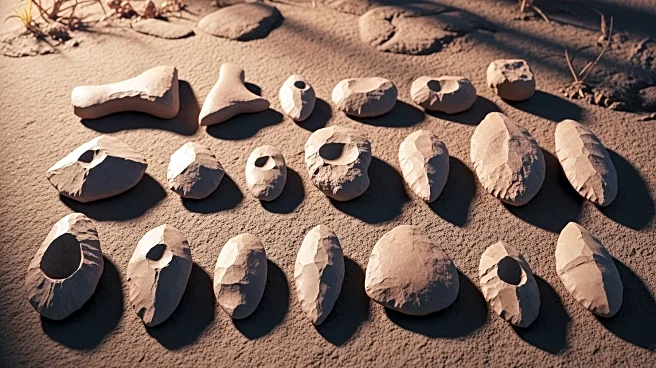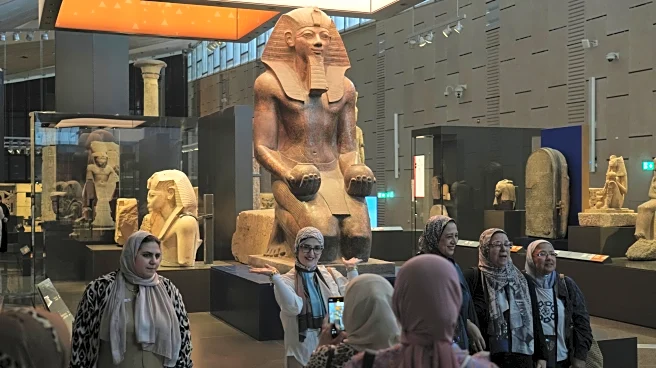What's Happening?
Recent studies have confirmed that Neanderthals were responsible for creating the world's oldest known cave art, found in three Spanish caves: La Pasiega, Maltravieso, and Ardales. These artworks, dated
to at least 64,000 years ago, include hand stencils, geometric shapes, and linear signs. The findings challenge previous assumptions that artistic expression was exclusive to Homo sapiens, highlighting the cognitive and cultural capabilities of Neanderthals.
Why It's Important?
This discovery reshapes our understanding of Neanderthals, suggesting they possessed sophisticated cognitive abilities and cultural practices similar to modern humans. It challenges long-held perceptions of Neanderthals as primitive and contributes to the broader narrative of human evolution. The findings may influence future archaeological research and theories about the development of art and symbolism in early human societies.
What's Next?
Further research is expected to explore the extent of Neanderthal artistic expression and its implications for understanding human evolution. Archaeologists may focus on uncovering additional sites and artifacts to build a more comprehensive picture of Neanderthal culture. The findings could lead to a reevaluation of the timeline and nature of artistic development in prehistoric societies.
Beyond the Headlines
The confirmation of Neanderthal art challenges the notion of human exceptionalism in cultural and artistic achievements. It prompts ethical considerations about the representation and interpretation of prehistoric cultures. The discovery may inspire a renewed interest in exploring the cognitive and social complexities of early human species.














